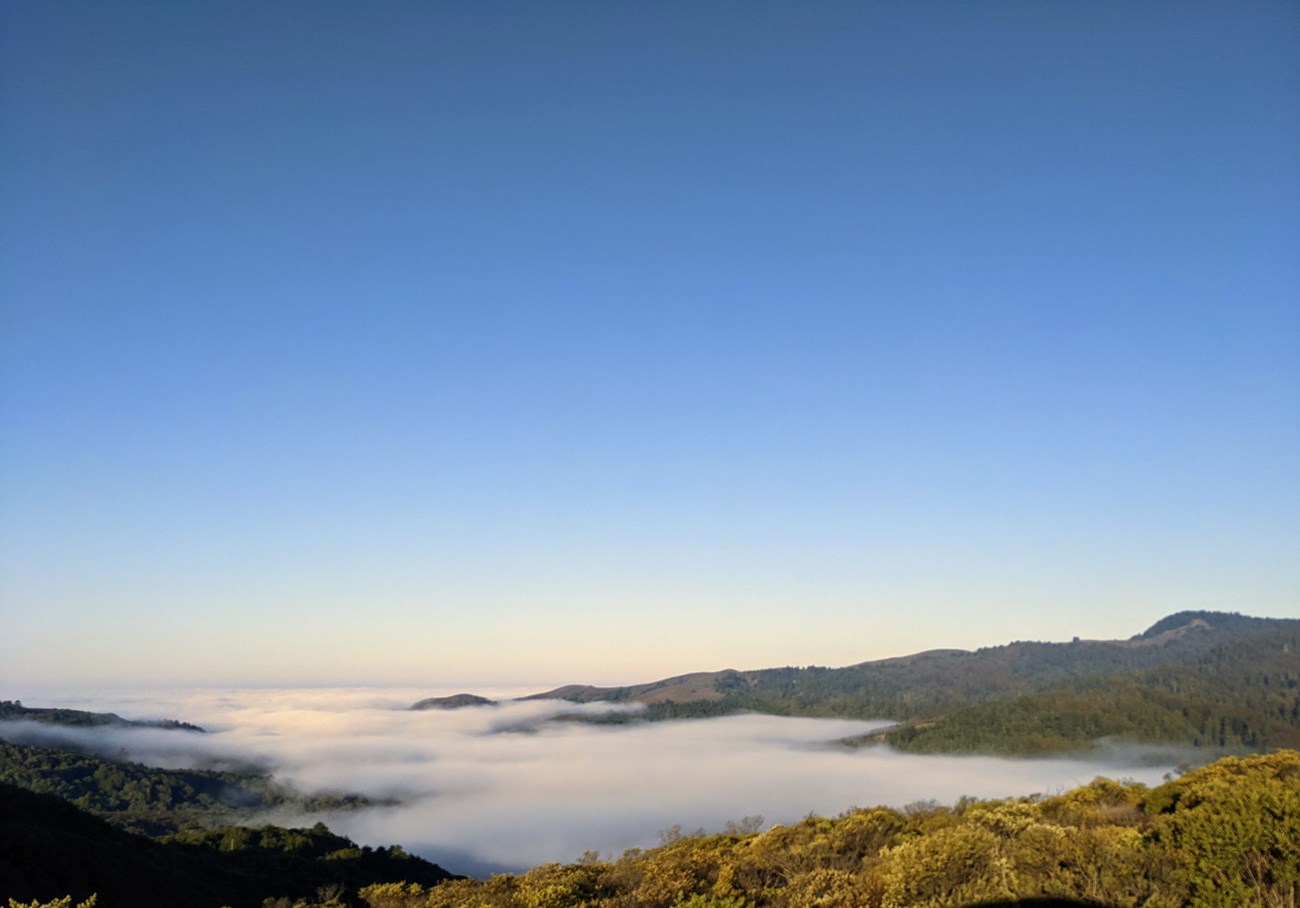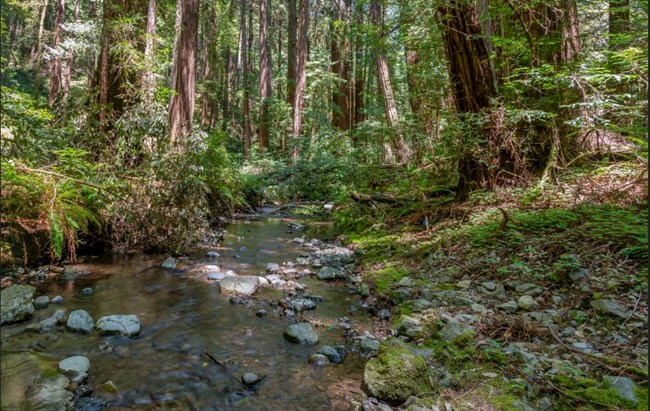Part of a series of articles titled Climate Change at Muir Woods.
Article
Fog, Redwoods and a Changing Climate

NPS
“No water, no life. No blue, no green.” -Sylvia Earle
Water is essential for all living things on Earth, including you, the food you eat, and coast redwoods. Redwoods can drink around 160 gallons (605 liters) of water per day. In the dry summer months, the trees get water from the iconic fog that blankets the forest. Redwoods get up to 40% of their water from the fog each year!
The amount of water available for redwoods is changing due to climate change. When people burn fossil fuels like coal, oil, or natural gas, we release carbon dioxide into the Earth’s atmosphere. Carbon dioxide acts like a blanket that traps heat. The more fossil fuels we burn, the thicker that blanket gets.
Climate change increases the Earth’s temperature, which disrupts precipitation across the globe. As we continue to burn fossil fuels, these changes will amplify. One change that's already happening is more severe droughts. Droughts put stress on plants, agricultural farms, and the ecosystems we depend on. As a result, water shortages and food availability are causing mass migrations around the world.
At Muir Woods, the fog redwoods need to survive has decreased by about a third, and there have been more severe droughts throughout California. Warmer temperatures also cause streams to heat up.Warmer water holds less oxygen, which coho salmon and steelhead need to breathe. Stream temperatures stay cool when there’s a cloud barrier keeping the sun off them—created either by fog or smoke from fires. These fires were often set by Indigenous people throughout California as a way to take care of the land and themselves.

Alison Taggart-Barone / NPS
Fog sustains redwoods and the ecosystems they support, including life in the creek. Specialized redwood tree needles catch the fog. The fog drips down through the canopy and replenishes the water in the creek. The amount of summertime fog has decreased which has left streams low and warm. Animals, trees, and people alike all rely on a healthy salmon population.
Water doesn’t just appear in our faucets or fields. It gets pumped, cleaned and delivered using electricity. That electricity usually comes from fossil fuels. Saving water saves energy, which reduces the amount of carbon dioxide we use to produce the water. That not only helps our water bills, but protects us all.
To protect redwoods forests, it’s important to work with our communities to reduce our dependence on fossil fuels. One way we can do that is asking for more water efficient buildings. How does your school reduce its water usage? What does your workplace do to limit water usage? While it may help at local levels, we can’t stop climate change by turning off the water when we brush our teeth. But when we work together, we can make real change! That will ensure that animals, redwoods, and people continue to thrive.
For more information
Rowling, Megan. Water Is an under-Used Weapon in Climate Change Fight, UN Says. Reuters, 22 Mar. 2020, www.reuters.com/article/global-water-climate-change/water-is-an-under-used-weapon-in-climate-change-fight-un-says-idUSL8N2BD7OJ.
Johnstone, J. A., and T. E. Dawson. “Climatic Context and Ecological Implications of Summer FOG Decline in the Coast REDWOOD REGION.” Proceedings of the National Academy of Sciences, vol. 107, no. 10, 2010, pp. 4533–4538., doi:10.1073/pnas.0915062107.
Jordan, C. 2021. Climate Change at Muir Woods National Monument, Mill Valley, California, USA U.C. Berkeley Department of Environmental Science, Policy, and Management.
Water and Climate Change. United Nations Educational, Scientific and Cultural Organization, 2020, unwater.org, www.unwater.org/publications/world-water-development-report-2020/.
Tags
- golden gate national recreation area
- muir woods national monument
- redwoods
- climate change effects
- climate change impacts
- climate change findings
- muir woods
- blog
- climate science
- climate
- science
- research
- coast redwoods
- trees
- iconic trees
- literature review
- salmonids
- coho salmon
- steelhead trout
- redwood creek
- drought
- water quality
Last updated: January 23, 2023
